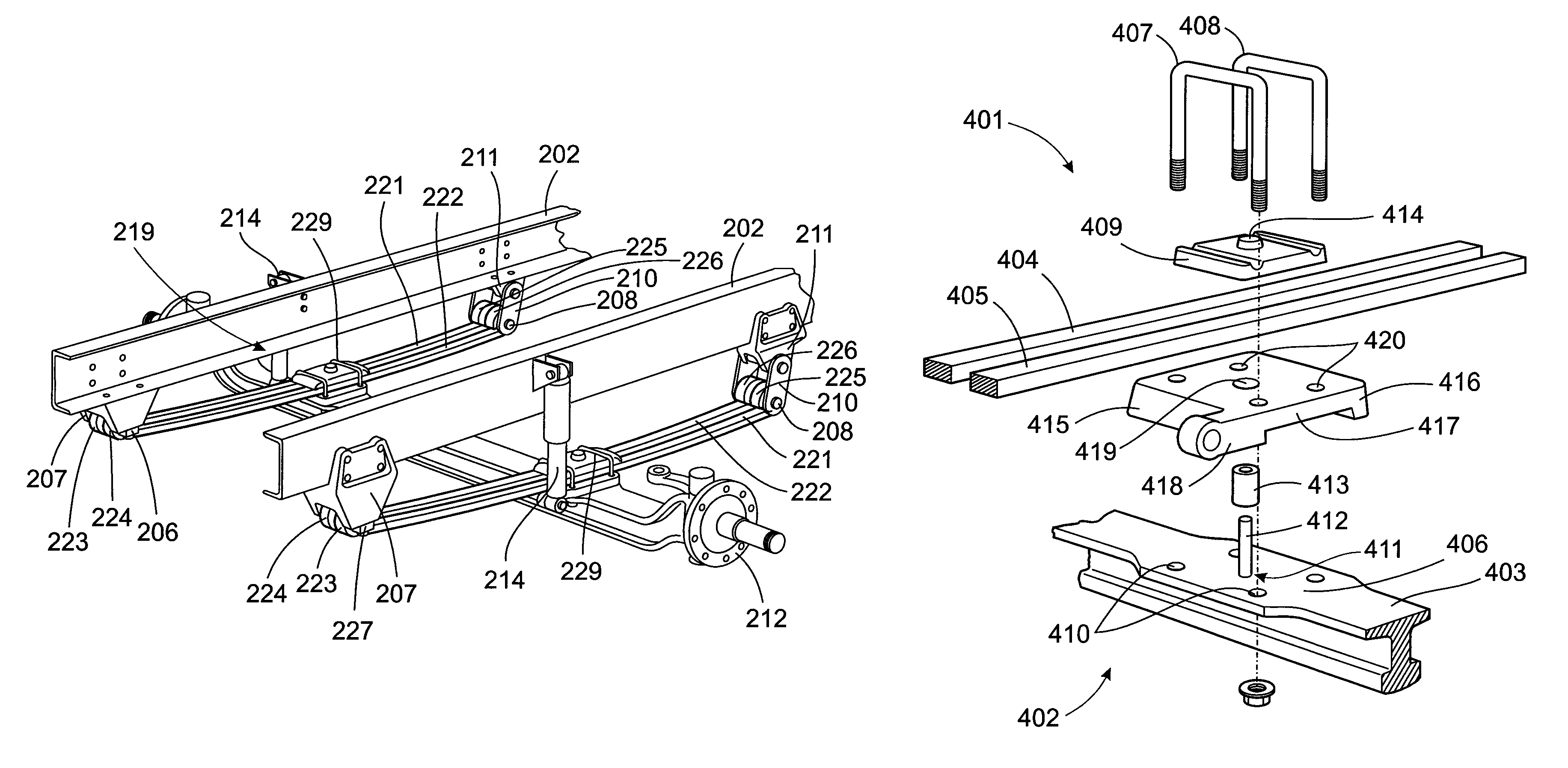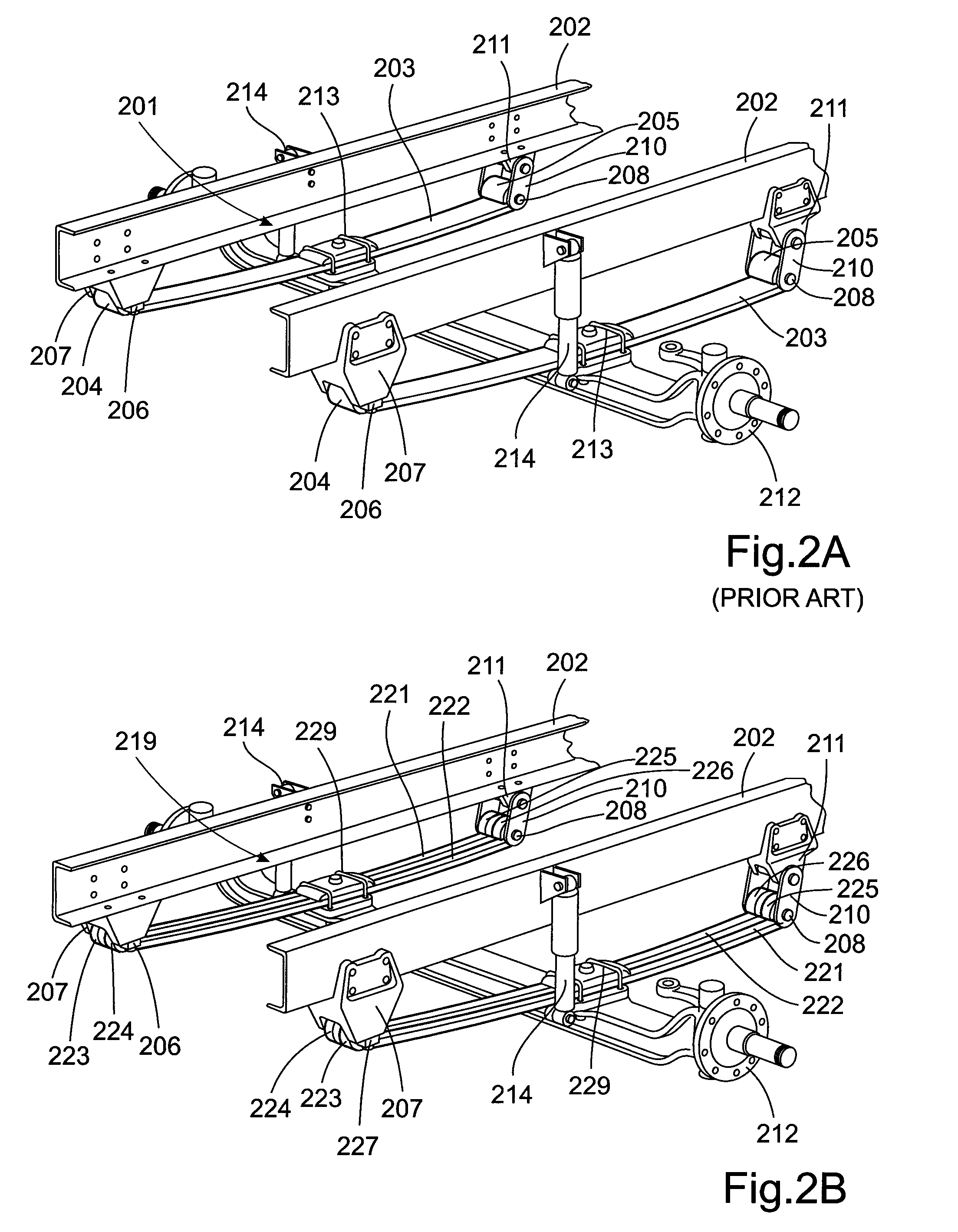Vehicle suspension comprising light weight leaf spring assembly
a technology of leaf springs and suspensions, which is applied in the direction of springs/dampers, mechanical equipment, transportation and packaging, etc., can solve the problems of relatively high cost of manufacturing tapered steel leaf springs, significantly more expensive than conventional flat springs, and relatively high cost of manufacturing tapered leaves. cost and weight reduction
- Summary
- Abstract
- Description
- Claims
- Application Information
AI Technical Summary
Benefits of technology
Problems solved by technology
Method used
Image
Examples
Embodiment Construction
[0042]FIG. 1 shows a schematic commercial vehicle 101 in the form of a tractor unit. The commercial vehicle 101 comprises a chassis 102 and a driver's cab 103 mounted on the chassis. Underneath the driver's cab 103 is an internal combustion engine 104, which acts on a pair of drive wheels 106 of the commercial vehicle 101 by way of a drive train 105 comprising a clutch and a manual transmission or an automatic transmission. The internal combustion engine 104 comprises an exhaust gas system 107 with a first and a second muffler connected to a tailpipe (not shown) which expels the exhaust gases to the atmosphere. The cab 103 is also supported by a pair of steerable front wheels 108. The steerable wheels are mounted on a rigid axle 109 attached to a suspension arrangement 110. The suspension arrangement 110 comprises a leaf spring assembly 111 according to the invention supported by a front bracket 112 and a rear bracket 113 with a spring shackle 114. In the example shown in FIG. 1 the...
PUM
 Login to View More
Login to View More Abstract
Description
Claims
Application Information
 Login to View More
Login to View More - R&D
- Intellectual Property
- Life Sciences
- Materials
- Tech Scout
- Unparalleled Data Quality
- Higher Quality Content
- 60% Fewer Hallucinations
Browse by: Latest US Patents, China's latest patents, Technical Efficacy Thesaurus, Application Domain, Technology Topic, Popular Technical Reports.
© 2025 PatSnap. All rights reserved.Legal|Privacy policy|Modern Slavery Act Transparency Statement|Sitemap|About US| Contact US: help@patsnap.com



